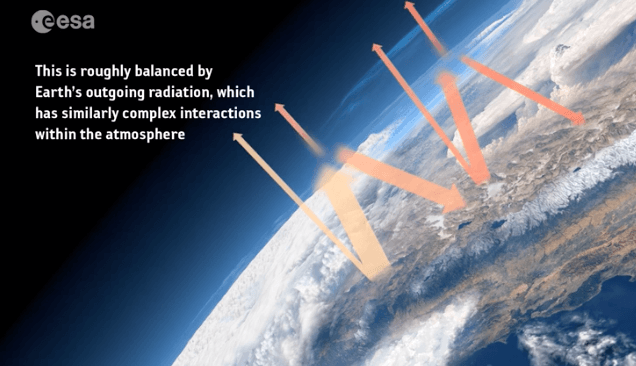ESA Satellite Will Improve Climate Modelling
September 26, 2019
on
on

The European Space Agency (ESA) is planning a new satellite mission to help provide a better understanding of the Earth's climate. The FORUM satellite system will measure the IR radiation emitted into space by the Earth to provide a more accurate value of the planet’s radiation budget.
The Far-infrared Outgoing Radiation Understanding and Monitoring (FORUM) mission is one of two concepts competing for ESA's ninth Earth Explorer mission to add real-world measurements to previous, purely hypothetical models of Earth's radiation budget. After a two-year feasibility study, FORUM was chosen in favour of the competing SKIM (Sea-surface Kinematics Multiscale Monitoring) concept after extensive debate amongst the scientific community.
FORUM will carry sensors able to detect the full range of IR radiation; until now, study of the lower wavelength radiation has been largely overlooked. The additional measurement data will provide a more accurate picture of the water vapour and greenhouse gasses in the atmosphere and allow more precise projections of how the climate will change. Climate change is currently a hot topic with far-reaching consequences for the economy, politics and our future.
ESA Video of the FORUM concept.
More than half of the radiated energy is in the far infrared range and climate models make assumptions about the actual extent of this radiation, because it has never been measured systematically.
With FORUM, it is intended to close the gap in our understanding and measure the entire far-infrared region of Earth's electromagnetic radiation. This data is important because terrestrial radiation is strongly influenced by water vapour and high-altitude cirrus clouds, which play a key role in surface temperature regulation.
The satellite design will be refined and optimised during the next phase of the project and we should see it blasting skywards sometime in 2026.
The Far-infrared Outgoing Radiation Understanding and Monitoring (FORUM) mission is one of two concepts competing for ESA's ninth Earth Explorer mission to add real-world measurements to previous, purely hypothetical models of Earth's radiation budget. After a two-year feasibility study, FORUM was chosen in favour of the competing SKIM (Sea-surface Kinematics Multiscale Monitoring) concept after extensive debate amongst the scientific community.
FORUM will carry sensors able to detect the full range of IR radiation; until now, study of the lower wavelength radiation has been largely overlooked. The additional measurement data will provide a more accurate picture of the water vapour and greenhouse gasses in the atmosphere and allow more precise projections of how the climate will change. Climate change is currently a hot topic with far-reaching consequences for the economy, politics and our future.
Better climate models
The Earth’s surface temperature is determined by the radiation balance at the upper atmospheric layers. According to current models, the radiation budget is influenced by the emission of greenhouse gases, thus reducing the emission of energy into space.More than half of the radiated energy is in the far infrared range and climate models make assumptions about the actual extent of this radiation, because it has never been measured systematically.
With FORUM, it is intended to close the gap in our understanding and measure the entire far-infrared region of Earth's electromagnetic radiation. This data is important because terrestrial radiation is strongly influenced by water vapour and high-altitude cirrus clouds, which play a key role in surface temperature regulation.
The satellite design will be refined and optimised during the next phase of the project and we should see it blasting skywards sometime in 2026.
Read full article
Hide full article


Discussion (0 comments)